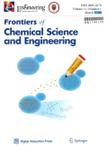Towards Cr(VI)-free anodization of aluminum alloys for aerospace adhesive bonding applications: A review
Towards Cr(VI)-free anodization of aluminum alloys for aerospace adhesive bonding applications: A review作者机构:Materials innovation institute (M2i) 2628 XG Delft The Netherlands Delft University of Technology Department of Materials Science and Engineering 2628 CD Delft The Netherlands Fokker Aerostructures BV 3351 LB Papendrecht The Netherlands Department of Materials and Chemistry Research Group Electrochemical and Surface Engineering (SURF) Vrije Universiteit Brussel 1050 Brussels Belgium
出 版 物:《Frontiers of Chemical Science and Engineering》 (化学科学与工程前沿(英文版))
年 卷 期:2017年第11卷第3期
页 面:465-482页
核心收录:
学科分类:081702[工学-化学工艺] 080503[工学-材料加工工程] 0817[工学-化学工程与技术] 08[工学] 0805[工学-材料科学与工程(可授工学、理学学位)] 0703[理学-化学]
主 题:aluminum Cr(VI)-free surface pre-treat- merits anodizing adhesive bonding
摘 要:For more than six decades, chromic acid anodizing (CAA) has been the central process in the surface pre-treatment of aluminum for adhesively bonded aircraft structures. Unfortunately, this electrolyte contains hexavalent chromium (Cr(VI)), a compound known for its toxicity and carcinogenic properties. To comply with the new strict international regulations, the Cr(VI)-era will soon have to come to an end. Anodizing aluminum in acid electrolytes produces a self-ordered porous oxide layer. Although different acids can be used to create this type of structure, the excellent adhesion and corrosion resistance that is currently achieved by the complete Cr(VI)-based process is not easily matched. This paper provides a critical overview and appraisal of proposed alternatives to CAA, including combinations of multiple anodizing steps, pre- and post anodizing treatments. The work is presented in terms of the modifications to the oxide properties, such as morphological features (e.g., pore size, barrier layer thickness) and surface chemistry, in order to evaluate the link between fundamental principles of adhesion and bond performance.



